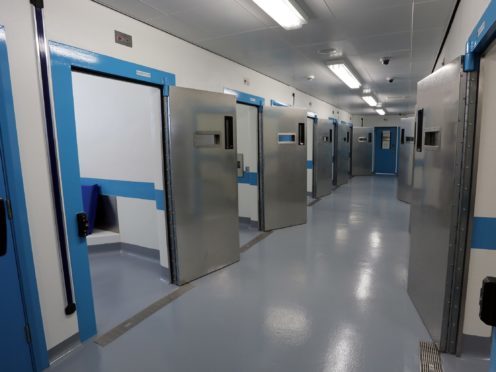Police could start using fitness tracker-style devices to monitor suspects’ vital signs while in custody.
Two UK forces are considering using the technology, which has been trialled in the NHS as what the inventors dub a “miniaturised intensive care” tracking system.
A simplified version for custody suites would measure heart rate, oxygen saturation levels, temperature and movement, and rank them as red, amber or green, alerting officers if a prisoner became ill.
Che Donald, vice chairman of the Police Federation, which represents officers in England and Wales from the rank of constable to chief inspector, said the devices could have a “mind-blowing” impact on custody safety.
“I honestly think it’s revolutionary and the impact this could have in enhancing the safety of people who have been taken into custody, whether that’s the point of arrest or entry into a custody suite, is absolutely mind-blowing.
A device similar to a Fitbit can monitor vitals of a detainee and reduce risk of deaths in custody, @PFEW_Che tells #PFEWPips Seminar. pic.twitter.com/ejGkL2O8om
— Police Federation (@PFEW_HQ) October 16, 2018
“It’s giving you real time data in relation to the physiology of the person whose liberty you’ve taken away.
“If we think about the increasing number of deaths that we’ve had within a custody environment, this has the implication to reduce it significantly if not eradicate.”
Twenty-three people died in or following police custody in 2017/18,
the highest number for a decade.
Of these eight people were taken ill in a police cell, three of whom died there and five who died later in hospital.
Nine others were taken ill at the scene of their arrest, four became unwell in a police vehicle and two died after they were released.
The devices were demonstrated as a world first at a Police Federation conference on Post-Incident Procedures that follow any policing operation or activity that results in death or serious injury.
Caerwyn Ash, one of the scientists from Detention Metrics who developed the technology, said the device could be a voluntarily-worn wristband, an ankle bracelet or even a stick-on plaster.
He was approached by the Home Office in 2016 to carry out research into preventing deaths in custody, and spent a night in a police cell wearing a heart monitor as part of his work.
Dr Ash said: “Detention Metrics have designed the device to continuously monitor the detainee’s vital signs and movements.
“Currently in police custody this level of observation is only achieved with a constant watch where an officer is present inside or at the cell door.
“The device does not replace the need of a constant watch in certain circumstances but does provide that level of constant watch to those detainees who would otherwise only be checked on every 30 minutes, which is the standard level of monitoring for low risk detainees.”
